UX Manager at Modere
UX was fairly new at the company when I started, and it wasn't organized efficiently for UX Designers. In this management role I've been able to further my understanding of UX and develop the UX process within the company.
As the UX Team Lead I prioritized and delegated ongoing projects, communicated with Business Analysts, Project Managers, Scrum Masters, and worked cross-functionally with teams in other departments.
UX Process
There was no established process for the UX Designers at Modere. The steps that my team and I took in our work were relatively unknown to our managers and coworkers. We were also consistently missing some key steps in our work that needed to be defined.
I developed the process shown below based on Modere's company structure, the design thinking model developed by the Interaction Design Foundation, and the RACI method.
-
Company Structure: Every company is different because of the people and culture. The process needed to be customized around that first, showing what steps we were already following.
-
Design Thinking: All UX processes should have these steps. Modere did not account for some of these properly, and I had to discuss with the managers how I could get more time for my team to work on the discovery steps.
-
RACI: It's important that progress is properly communicated. The RACI method ensures that everyone who needs to know the updates are informed. The biggest obstacle to overcome in the UX process for Modere is finding out who is Accountable for every project. Working on defining this process led me to discuss with my manager how we can identify the Accountable party. The succeeding projects ran a lot smoother once we had worked this out.
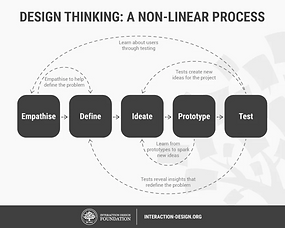
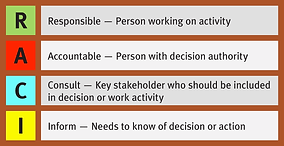

Defining UX
A big part of my role as UX Manager has been to expel some of the mystery around what UX is and what a UX Designer does. I found that many of my coworkers had just never been told what UX Design is, what kinds of things a UX Designer can do for them, and what the benefits are when consulting a UX Designer.
I started by conducting a Brown Bag presentation to a few of the departments across the company called Defining UX. This went over the broad strokes of what the field is. At the end anyone was able to ask me questions about how either I could assist the various departments, or how they could utilize user-centered thinking on their own to improve their work.
One of the ways I was able to help the sales department after this presentation was to start to normalize user interviews. There had been some attempts to conduct these in the past, but they were not carried out by UX experts and were either not insightful, results were influenced by leading questions, or there were other negative outcomes.
I put together a presentation describing good interview strategies as well as a script outline for the project I was working on. After showing them this, all of their hesitation fell away and we were able to conduct several successful interviews that brought a lot of actionable feedback which they had no idea were issues our users faced.
Here is a quote with some of the feedback that I received from them:
“Thank you Shannon and team, these guys are incredible. If you talk to Shannon for a little bit, she’s incredibly intelligent and has a ton of experience. Every time we talk, I’m impressed with her. Trust me, these guys are like the quiet scientists, they’re the genius behind the things we do. They listen to everything that our users are saying and taking copious notes to see how we at Modere can get better.”
- High-level Coworker
One on Ones
Every week I have a 1:1 with my direct reports. I utilize the template below in a word document. My direct report fills it out with what they want to talk about before we meet. Every week a new section is added so that the notes from the previous 1:1 is kept as a record for later reference.
It gives them the opportunity to not only list out what they need from me, but also to give me feedback on how I'm doing, state an accomplishment that we can celebrate, mention something that didn't go well that we might be able to fix or avoid in the future, and list out the priorities that they should be focused on.
For the priorities, I have them list out 6 tasks they need to accomplish and order them by most pressing to least. That way they know what they need to work on to keep them productive. I also have them write down which of their annual goals they are currently working on.
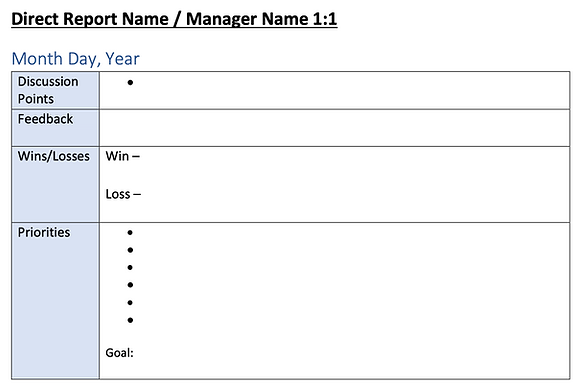
Performance Reviews
Performance reviews are held at the beginning of every year. The template that Modere uses is shown below. It provides my team and I with an opportunity to go over how/if their goals from the previous year were met, showcase what they have accomplished over the last year, define strengths and weaknesses, and give me the opportunity to give a performance summary.
This information is used to shape their annual goals.
Annual Goals
Annual goals are created based on the feedback seen in the performance review. Depending on the person, I will try to get between 3-6 goals that the direct report can work on slowly over the course of the year. These goals will include things like furthering education, improving technical ability, and working on areas of improvement.
For full-time Modere employees we use a goal tracking software called Clear Company:
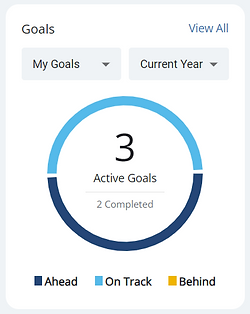
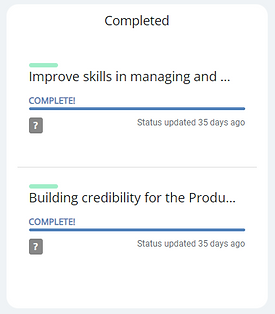

Contractors were not able to access Clear Company, so I wrote them out by hand for my team members who needed them. Here is an example of one of the goal sheets I wrote out for one of my contracting direct reports.
